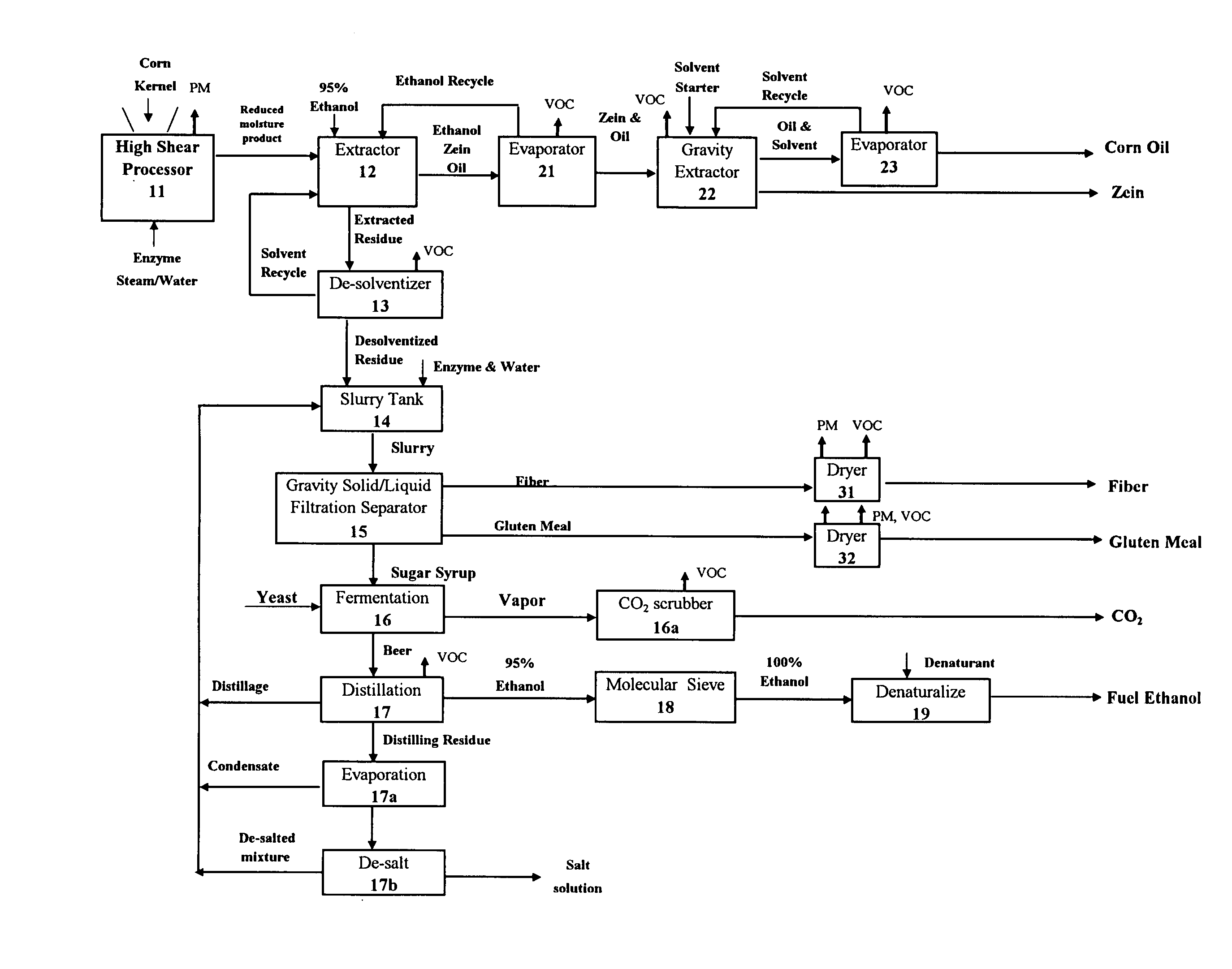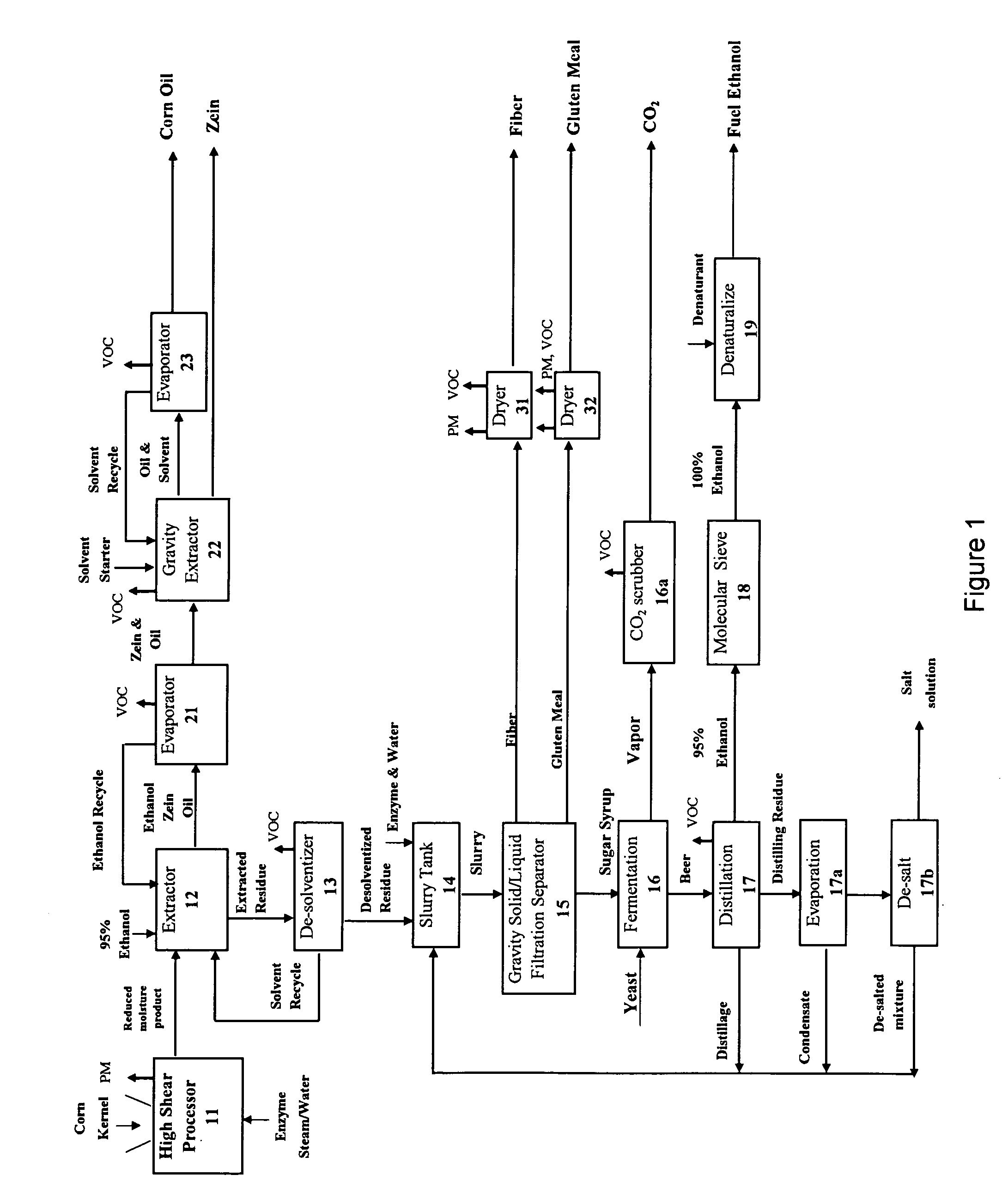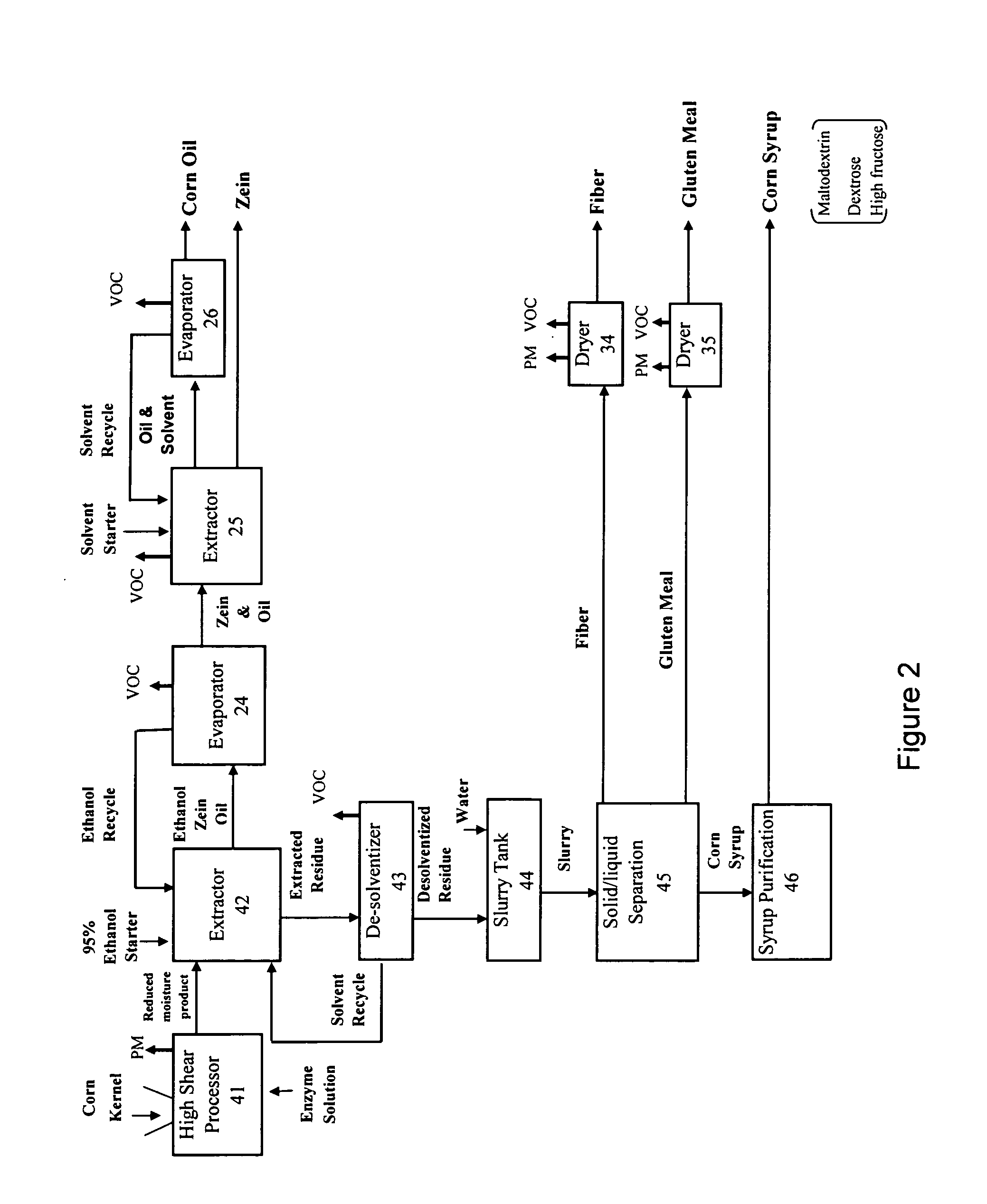Starchy material processed to produce one or more products comprising starch, ethanol, sugar syrup, oil, protein, fiber, gluten meal, and mixtures thereof
a technology of starchy material and starch, which is applied in the field of processing a starchy material to produce starch, ethanol, sugar syrup, oil, protein, fiber, and mixtures, can solve the problems of large capital investment in machinery, complex wet milling method, and time-consuming and labor-intensive corn kernel grinding, so as to achieve less capital investment and less operating cost.
- Summary
- Abstract
- Description
- Claims
- Application Information
AI Technical Summary
Benefits of technology
Problems solved by technology
Method used
Image
Examples
example 1
[0110] A two-inch twin-screw high-shear processor (Readco Manufacturing Company, York, Pa.) was used for feasibility studies. A five-inch twin-screw processor also was provided by the Readco Manufacturing Company. Corn kernel and corn gluten meal were processed according to the flow diagram (FIG. 1). For whole corn kernel, two controls were prepared. One set of control samples were processed without addition of alpha-amylase, and the other set of control samples were processed without high temperature but with high shear.
[0111] In extraction experiments, 1,000 g of sample was placed in a column (5 cm in diameter, and 65 cm in length) jacketed with hot water at 65° C. to 75° C. After two hours, the temperature of the samples was equilibrated, and 1,300 ml of 95% ethanol was pumped to the top of the column and elution started. Approximately 1,000 ml of eluant was collected, and the rest of the solvent was entrapped in the corn residue. The extractant was cooled to ambient temperature...
example 2
[0117] 25 ml of alpha-amylase (Spezyme Fred) from Genencor and 1,500 ml of water was mixed with 5 kg of corn and the mixture was fed into a 2-inch continuous processor at a rate of 70 g per minute; the steam pressure in the steam jacket was 90 psi; and RPM of 100. The processing provided a reduced moisture product in the form of powder had a moisture content of approximately 6%.
[0118] 1000 g of the reduced moisture product was placed in an extractor column (5 cm in diameter, and 65 cm in length) jacketed with hot water at 68° C. 1,300 ml of ethanol (65 C) was fed from the top of the extractor column. 1000 ml of eluent was collected at a rate of 20 ml per minutes. The residual material in the column was de-solventized by passing compressed air through the column (ethanol was not recovered). The eluent was evaporated using a vacuum rotary evaporator. 87 g of the residual material was obtained. The oil in the residual material was then extracted twice with 250 ml of hexane. Approximat...
PUM
| Property | Measurement | Unit |
|---|---|---|
| temperature | aaaaa | aaaaa |
| boiling temperature | aaaaa | aaaaa |
| boiling temperature | aaaaa | aaaaa |
Abstract
Description
Claims
Application Information
 Login to View More
Login to View More - R&D
- Intellectual Property
- Life Sciences
- Materials
- Tech Scout
- Unparalleled Data Quality
- Higher Quality Content
- 60% Fewer Hallucinations
Browse by: Latest US Patents, China's latest patents, Technical Efficacy Thesaurus, Application Domain, Technology Topic, Popular Technical Reports.
© 2025 PatSnap. All rights reserved.Legal|Privacy policy|Modern Slavery Act Transparency Statement|Sitemap|About US| Contact US: help@patsnap.com



